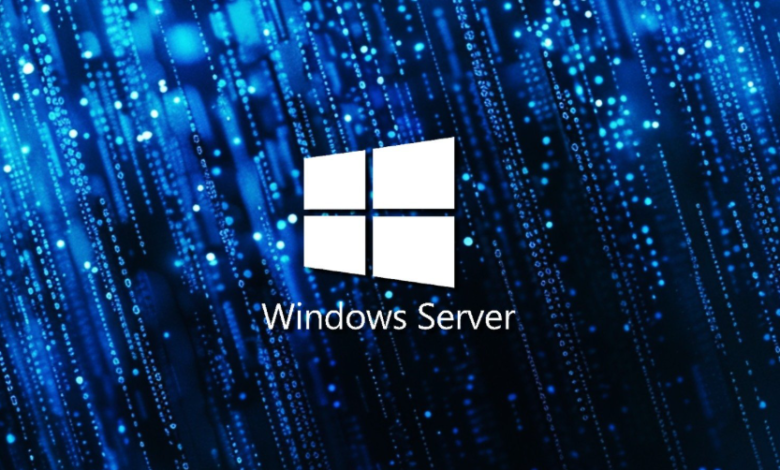The Future of Enterprise Computing with Windows Server 2025 License

The Evolution of Windows Server 2025
The Windows Server 2025 license represents the next major step in Microsoft’s ongoing journey toward enhancing enterprise computing environments. Designed with modernization and scalability at its core, Windows Server 2025 introduces cutting-edge innovations that align with the evolving needs of IT infrastructure, hybrid cloud integration, and cybersecurity. This version continues Microsoft’s tradition of empowering organizations to manage data and applications efficiently, while integrating more closely with Azure and other cloud services for a truly hybrid experience.
From its inception, the Windows Server line has been known for its reliability, and Windows Server 2025 extends this legacy with a refined architecture built to handle today’s demanding workloads. Enterprises can expect improved virtualization capabilities, streamlined deployment tools, and deeper automation support. These enhancements not only reduce operational complexity but also allow IT teams to focus on innovation rather than maintenance. The licensing model for Windows Server 2025 further supports scalability, ensuring that both small and large organizations can adopt the system based on their specific usage and capacity requirements.
Advanced Features and Innovations
Windows Server 2025 introduces a broad spectrum of technological advancements that cater to modern enterprise needs. Among the most notable features are improved kernel-level optimizations, support for the latest hardware configurations, and seamless compatibility with containerized applications. Microsoft has strengthened the integration between Windows Server and Azure Arc, enabling centralized management across on-premises and cloud environments. This means administrators can now oversee their hybrid systems with greater control and visibility, leading to optimized performance and reduced downtime.
Another major innovation lies in the enhanced Windows Admin Center, which now provides advanced automation, intuitive dashboards, and real-time insights. IT professionals can easily monitor system health, configure updates, and manage workloads from a single, unified interface. Moreover, Windows Server 2025 delivers expanded support for Linux workloads through Windows Subsystem for Linux 2 (WSL2), allowing developers and administrators to deploy cross-platform solutions more efficiently. This flexibility makes it an ideal platform for organizations embracing multi-environment development strategies.
See also: Hidden Secrets of Australian Luxury Homes: What Elite Designers Don’t Want You to Know
Security Enhancements and Compliance
Security remains a top priority for enterprises, and Windows Server 2025 addresses this concern with a series of powerful, built-in protection mechanisms. The license comes equipped with next-generation security features such as enhanced Secure Boot, Credential Guard, and improved ransomware detection tools. Microsoft’s Zero Trust security model is fully embedded, ensuring every access request—whether from internal users or external networks—is verified and authenticated. These features collectively strengthen defense against emerging cyber threats while minimizing system vulnerabilities.
Compliance and governance also play a critical role in enterprise environments, and Windows Server 2025 aligns with global data protection regulations such as GDPR and HIPAA. It introduces advanced auditing tools that make it easier to track access, monitor sensitive data, and generate compliance reports. With automatic patching and security baseline enforcement, organizations can maintain a consistent and compliant infrastructure without extensive manual oversight. The combination of these features gives businesses confidence that their IT environments are not only efficient but also secure and regulation-ready.
Licensing Models and Deployment Flexibility
The Windows Server 2025 license is designed to accommodate a wide range of organizational needs, offering multiple editions and flexible licensing models. Businesses can choose between Standard, Datacenter, and Azure Editions, depending on their workload and virtualization requirements. The Standard Edition is best suited for physical or lightly virtualized environments, while the Datacenter Edition supports unlimited virtualization and advanced storage options. For enterprises heavily invested in cloud integration, the Azure Edition provides seamless hybrid capabilities that extend on-premises functionality to Microsoft’s cloud ecosystem.
Microsoft has also introduced a more transparent and scalable licensing structure based on cores rather than processors, ensuring fair pricing across diverse hardware configurations. This model allows organizations to optimize their IT investments while maintaining licensing compliance. Additionally, Windows Server 2025 supports both on-premises installations and hybrid deployments, giving companies the flexibility to operate in traditional data centers or in combination with Azure services. This adaptability ensures that enterprises can migrate at their own pace, adopting cloud resources as needed without disrupting existing operations.
Performance Optimization and Business Value
Beyond technical improvements, the Windows Server 2025 license delivers significant business value through performance optimization and cost efficiency. The operating system’s enhanced resource management allows for faster data processing, reduced latency, and improved application responsiveness. Whether handling enterprise databases, virtual machines, or web services, Windows Server 2025 offers the power and scalability required to meet high-demand workloads. Its support for the latest generation of CPUs and GPUs ensures maximum performance for AI, machine learning, and analytics applications, making it an essential platform for data-driven businesses.
From a financial perspective, Windows Server 2025 helps organizations achieve greater return on investment through automation and reduced maintenance requirements. The improved system efficiency translates into lower energy consumption and minimized downtime, contributing to operational sustainability. Additionally, the deep integration with Azure enables cost-effective hybrid cloud strategies, where workloads can dynamically shift between on-premises and cloud environments based on demand. This capability provides businesses with agility and resilience in a competitive digital landscape, solidifying Windows Server 2025 as a cornerstone of modern IT infrastructure.




